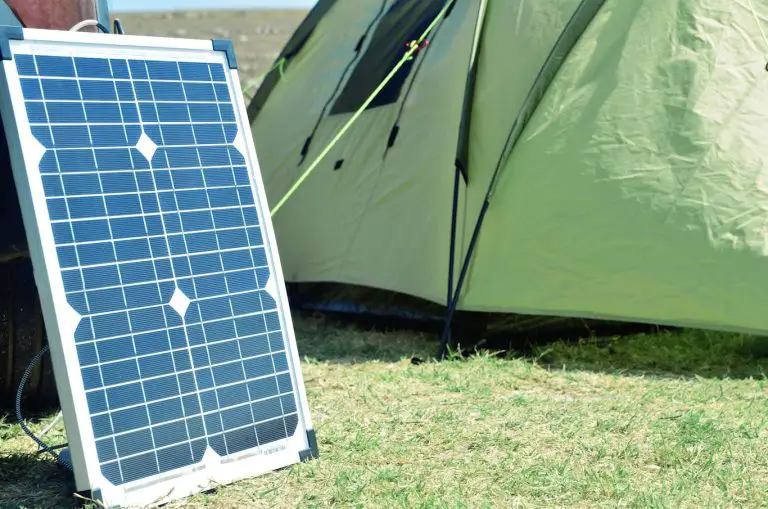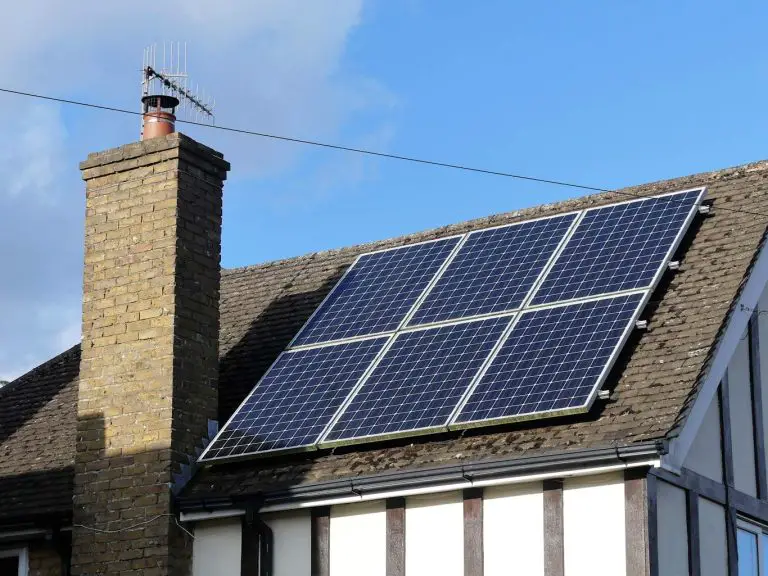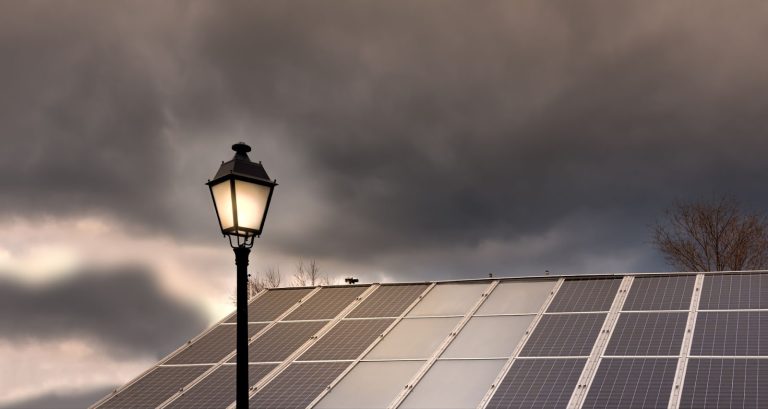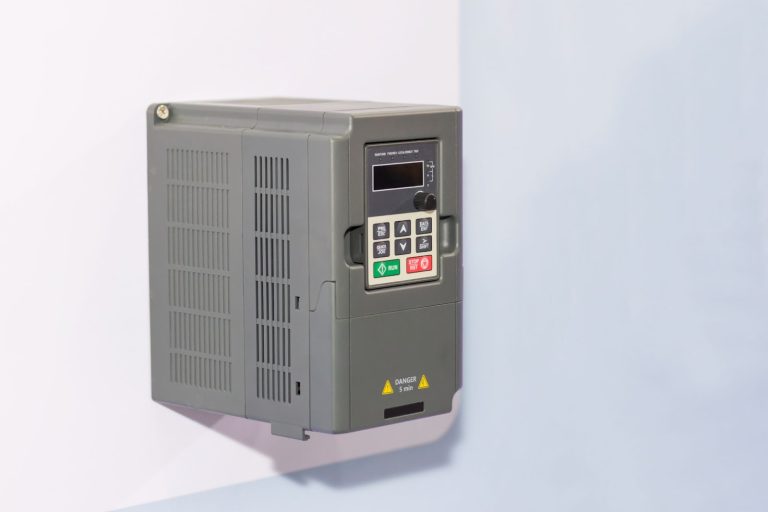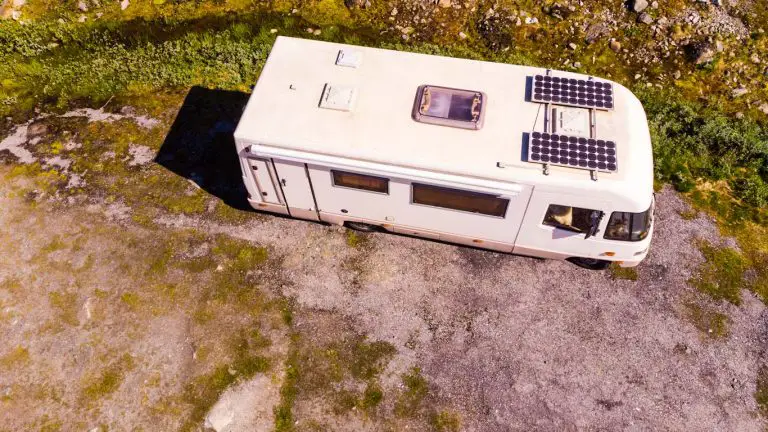What Happens When Solar Batteries Are Full?
Should overcharging occur in a solar panel system, this can severely damage the battery life. Thus, many solar panel systems incorporate features such as charge controllers and inverters to enforce trickle charging and redistribute excess charge. However, you can also send power back to the grid if allowed.
Solar panel systems have become more and more prevalent in homes around the world, and many people are opting for solar when engaging in outdoor activities. The sun’s energy is harvested and stored in batteries for various uses.
This article will take a closer look at how the inverter and charge controller work to send power either back to the panels themselves or into the grid to protect the batteries.
What Happens at Night
A solar system works during the day to generate power from the sun’s rays. Of course, this means that they operate best when the sun is shining and if angled in such a way as to make the best possible use of direct sunlight.
Although solar panels cannot generate power at night, you can still use the power that they generate overnight.
An essential element of any solar panel system is the charge controller. This is a built-in feature in most systems that assists in the charging of the batteries.
The charge controller’s purpose is to ensure that the batteries remain full and that they don’t overcharge or excessively discharge, as both these situations greatly impact the lifespan of any battery.
If a battery reaches its full charge, this means it can no longer store any more power generated by the solar panels.
If it continues to flow into the battery, the battery’s voltage will get too high, and this can cause the battery to either ignite or explode, but will inevitably cause rapid degradation and overheating, which drastically reduces its lifespan.
During the night, when the battery is most likely to be full, the charge controller will reverse the incoming power, pushing it back into the solar panels or into the grid, depending on the system in question. This helps prevent battery overcharge.
Charging Stages
When it comes to the battery itself, there are three different stages of charge that help prevent overcharge from happening.
In essence, the batteries will function at an optimal level to allow you to use all of the generated power before the need for battery overcharge protection becomes necessary. The three charging stages are called bulk, absorption, and float charging.
The bulk stage of charging is the first stage, and it is employed when the batteries can still absorb maximum charge. During this stage, maximum voltage and current are pushed into the battery, and it will charge up a battery fairly quickly until it reaches about 80% of its full charge.
The absorption stage of charging is the next stage, and this can differ from battery to battery. The maximum voltage will still be maintained, but the current will be reduced, and the battery will slowly charge until it either reaches 100% of its capacity in 2-stage chargers or 95% in batteries that utilize the full 3-stage charge cycle.
The third and final stage utilized by batteries that charge in three stages is called the float stage. During this stage, the voltage will be reduced to the float voltage of the battery in question, and the current will decrease to a trickle. That is why this stage is also called trickle charging.
If you can reach the float stage and keep your batteries at this stage, never discharging less than 95%, your batteries will have their longest possible lifespan, easily lasting for 15 to 20 years (source).
The Inverter’s Role and Effects on the Meter and Grid
The inverter is another important feature in any solar panel system that often comes into play when the solar batteries are full. Some systems will have smart inverters, which can be connected to the grid so that the inverter can push generated power back into the grid when the batteries reach their full capacity.
In an optimally functioning solar panel system, the amount of power generated by the system should be sufficient for the home.
This means that if you can get your batteries to reach the float charge stage and keep them there, all of the generated power will go to the meter of the home, and you are using your solar panel system to its full potential.
Should the amount of power generated be too much, some of it will go back into the grid. The way this works is that the inverter will realize the battery has reached a dangerously full charge and, to mitigate risks of overheating, explosion, and battery damage, the inverter will push power back into the grid.
However, this power is not lost. If you have a smart inverter system that can perform this function, the power pushed back into the grid will reflect as credits on your utility bill (source).
Excess Power in an Off-Grid System
Although a smart inverter can easily send power back into the grid when your home is connected to it, it is also true that solar panel systems are often used in circumstances where it is not possible to connect to the grid.
The most common instance of this occurrence is when people are using solar panels for outdoor activities such as camping.
It is not uncommon to use solar power for a more convenient camping experience, and many people are choosing to kit out their RVs and other campers with solar panels for additional power when on the road.
If you are not connected to the grid and your solar batteries reach a full charge, the system will enforce what is known as a dump load. This is the most efficient way of using excess charge without too much unnecessary power loss.
Ice and Refrigeration
The first place where an excess charge will be used when the batteries reach their full capacity is for ice and refrigeration. The solar panel system will first utilize generated power for devices and appliances that require immediate power, and then, once the battery reaches capacity, it will run the ice and refrigeration systems off of the excess power.
The reason for this is well-insulated refrigerators and freezers if can work on minimal power for several days.
Air Compression
The next dump load for an excess charge is any type of air compression machine. A smart solar panel system will send excess power to air compression devices as this offers the system a place to store power that can then be used at a later stage.
Therefore, the air compressor may not need to use the power immediately, but it can store it, ready for use at a later stage when the battery is no longer running at full capacity and needs to power other immediate-consumption devices and appliances instead.
The Dangers of Overcharge
Although it may not seem like such a big deal, overcharging a battery can actually be incredibly dangerous. We may leave our cell phones or power banks on charge overnight, but these devices have their own built-in protection systems.
A solar panel system and its batteries function in a different way, and overcharging these batteries is a significant risk.
As soon as a solar battery reaches a full charge, the inverter and charge controller needs to jump into action to mitigate the risks by taking care of the excess power. They either push it back into the panels, which will result in a power loss, push it back into the grid for utility credits, or enforce a dump load.
If a battery starts to enter a stage of overcharge, this leads to overheating and a dramatic water loss. If this happens, the battery will run the risk of exploding or igniting, and it will inevitably drastically reduce the lifespan of the battery in question.
The way these dangers can be prevented is, of course, by installing a properly functioning charge controller and inverter, and that is why it is also a good idea to have these items inspected and assessed on a regular basis.
The best way you can stay on top of everything is by investing in a power panel with digital monitoring options. This means that you’ll be able to see the charge level of the battery, the charge stage it is currently in, and the functionality of your charge controller and inverter.
By closely monitoring your system with something as simple as a digital panel, you can easily prevent your batteries from ever reaching a dangerously full charge (source).
Final Thoughts
The batteries utilized in a solar panel system are often referred to as solar batteries, and they are loaded with the power generated by the panels. If the batteries reach a full charge, the system will enforce either a dump load or push it back into the panels or the grid to protect the batteries.
Solar batteries that reach a state of overcharge run the risk of igniting, overcharging, and overheating, which can reduce the lifespan of the battery. However, most solar panel systems have built-in inverters and charge controllers that can help mitigate these risks by dealing with the excess power generated by the system.


